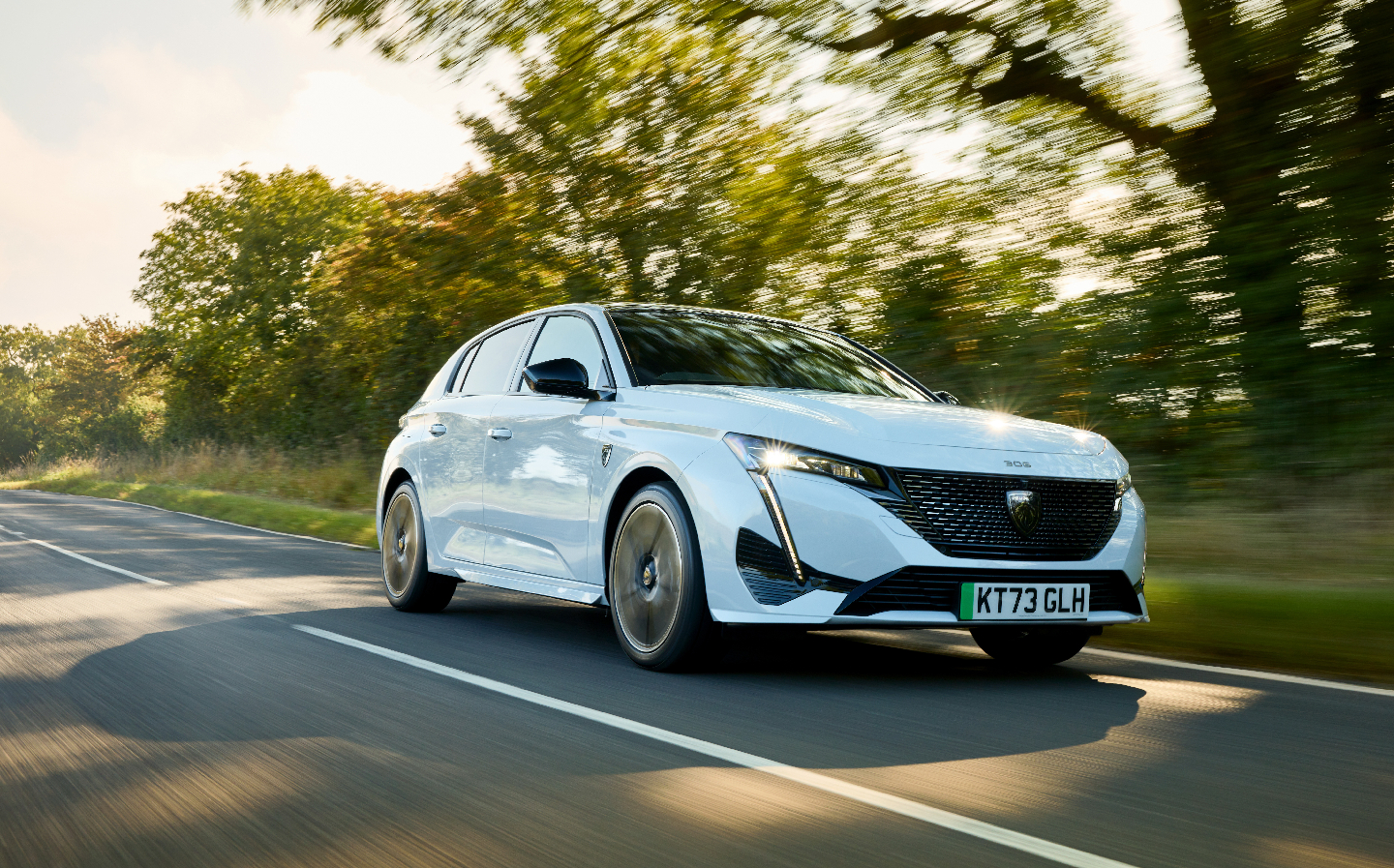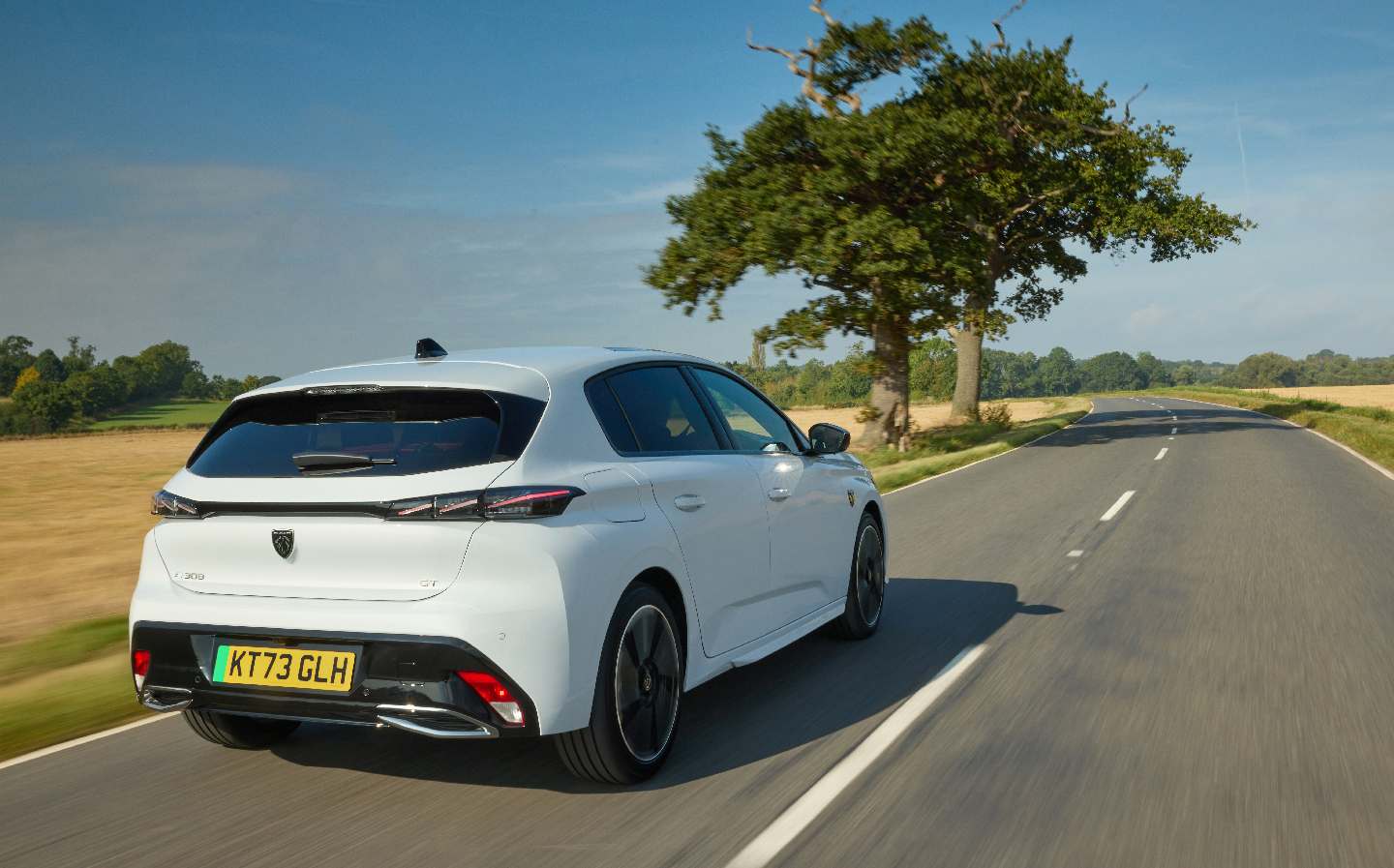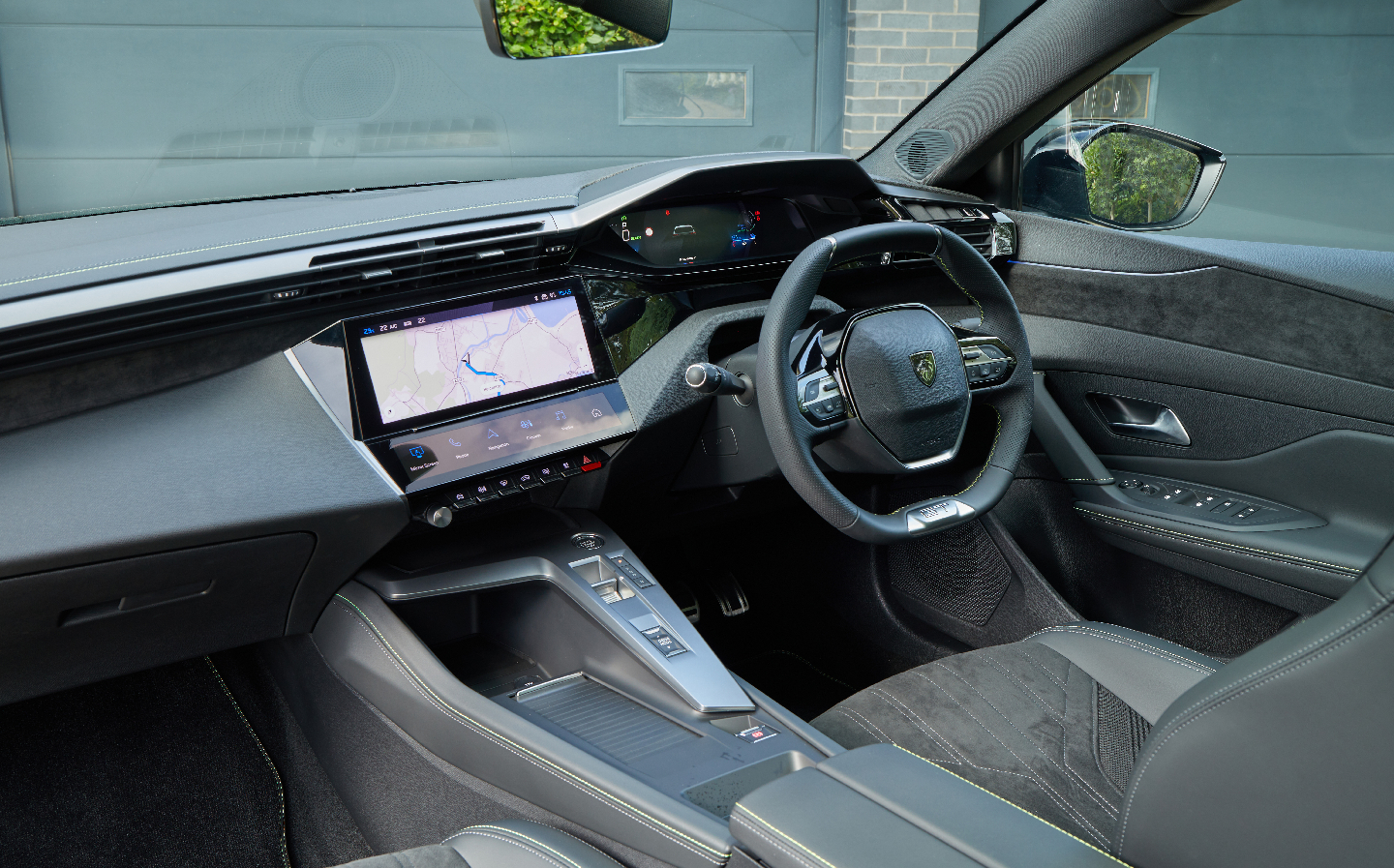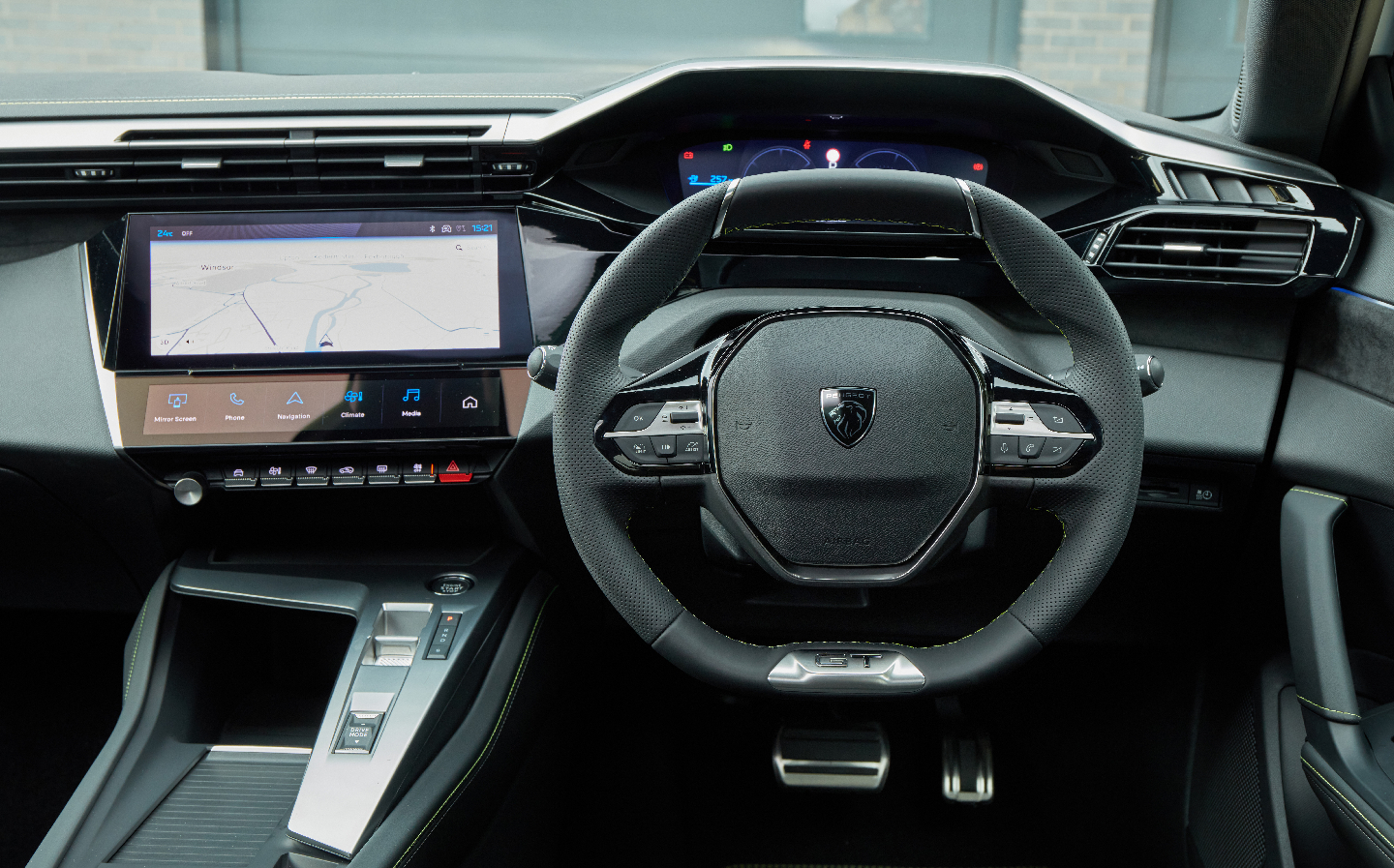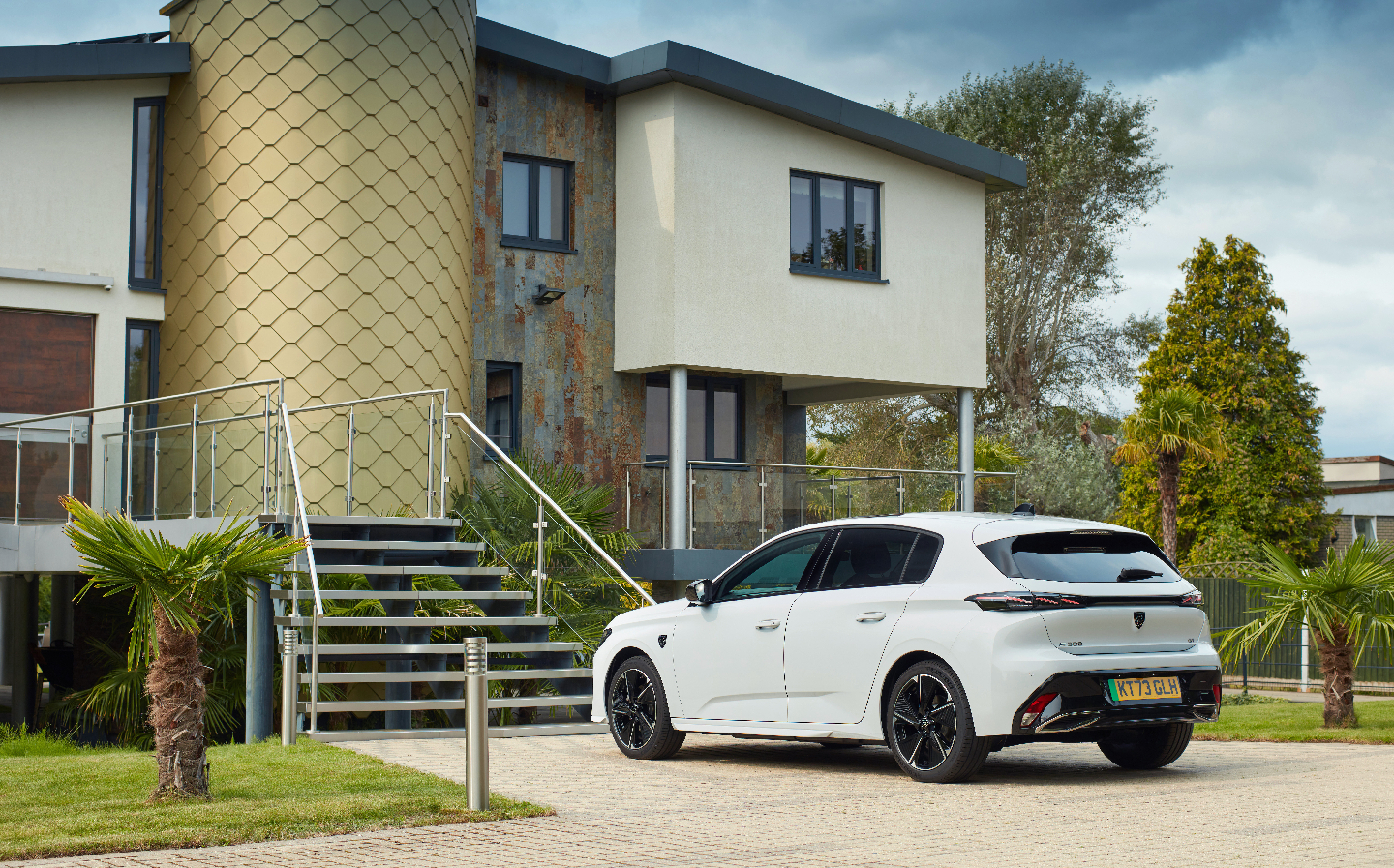Peugeot e-308 review 2023: An electric family car desperate to stand out from the family
Its main rival is cost
Anyone who’s part of a large family will tell you it has its advantages and disadvantages. Peugeot is a member of one of the biggest automotive families on the planet, Stellantis, with siblings including Vauxhall, Fiat and Citroën, which means that it gets to rummage through the group’s wardrobe (parts bin, if the analogy has already gone too far) and pull out the bits it wants – chassis, engines and e-motors, window switches, electronics…
But, like a member of the Jacksons or Kardashians, each individual brand also wants to stand out on its own. So when it comes to a car like the new Peugeot e-308, which is pretty much identical underneath to the Vauxhall Astra Electric and will likewise be available in hatchback and estate forms, things get tough.
The styling is obviously the main thing Peugeot’s marketing folk can draw our attention towards. It’s not a bad looking car in hatch form, and arguably even more attractive with the extended rear end. Compared with the Astra Sports Tourer Electric, the Pug is a great-looking thing.
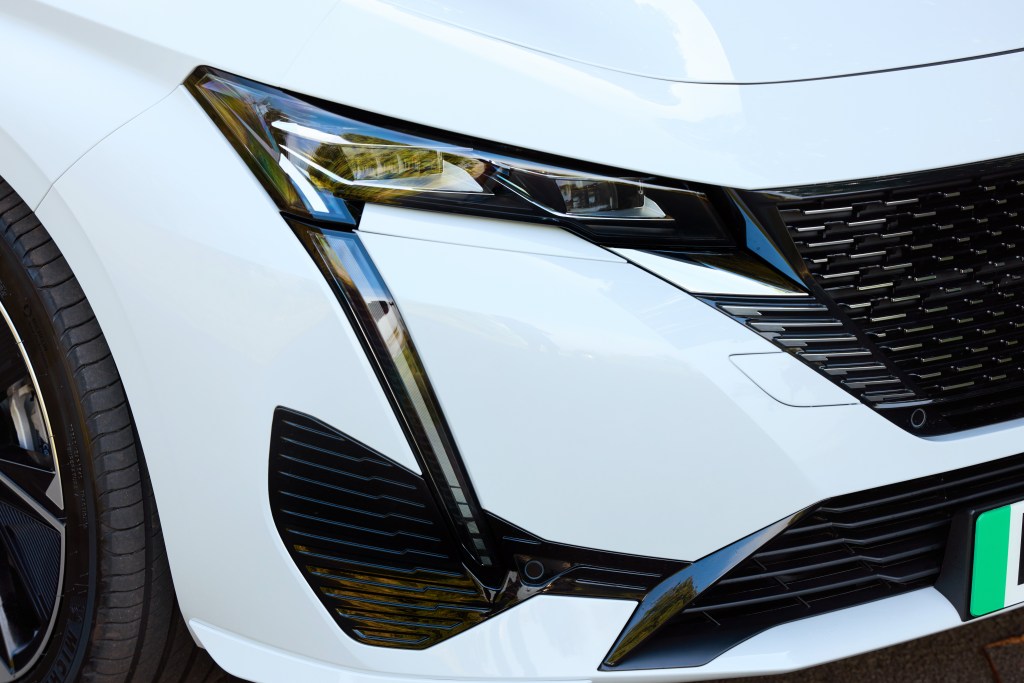
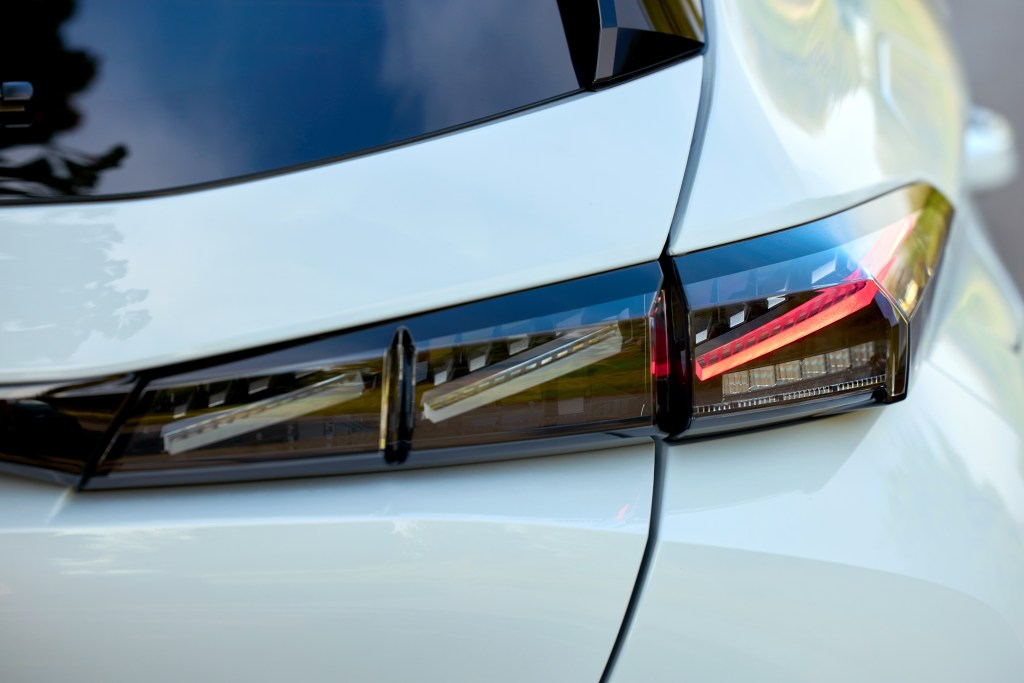
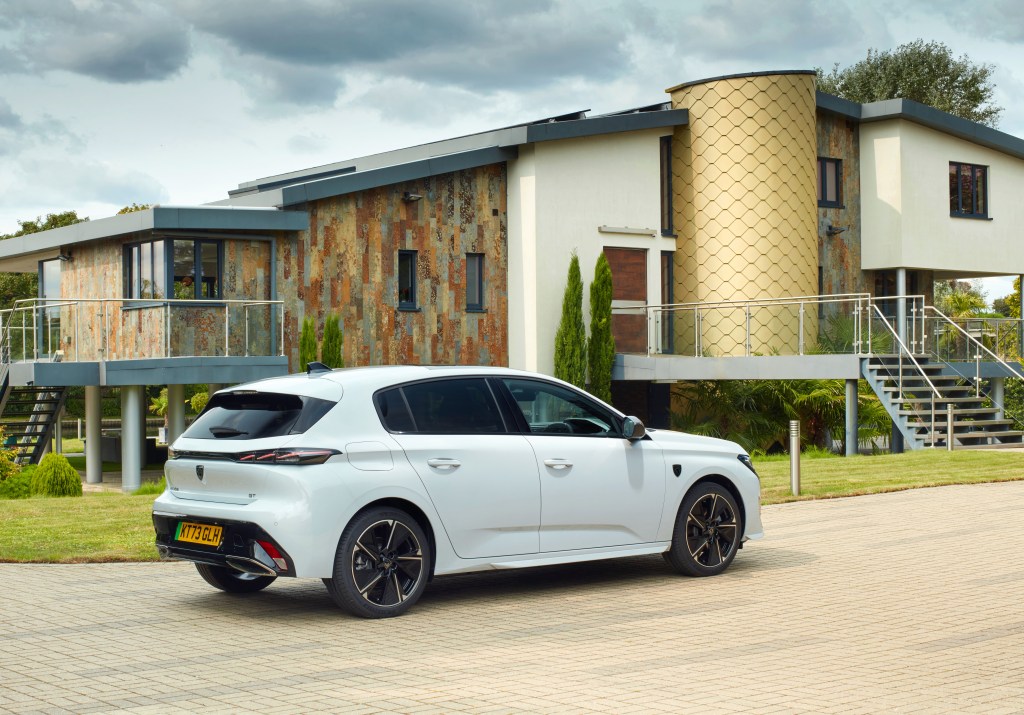
The estate, which isn’t on sale in the UK just yet, may be the better option for rear passengers, too, as I was interested to discover that it has an extended wheelbase (the distance between the front and rear wheels) compared with the hatch. That gives the 308 SW (sport wagon) some extra road presence as well as a bit of extra legroom for those in the back.
The front end isn’t the absolute latest in Peugeot design as it still carries the lion fang LED light signature rather than the new three claw versions, as seen on the 208, but it’s still a distinctive look. The large, blingy grille is pretty eye-catching, too, as is the updated and oversized lion crest logo adorning the nose.


Peer round the side and you spot the new 18in diamond cut alloy wheels that were developed especially for the e-308 to improve aerodynamic efficiency (and thereby help it go further per charge). The rear is neat and tidy, too, especially the LED signatures — the three claws do make an appearance on the rump.
But it’s inside that Peugeot is more obviously trying to make its mark. If you’ve never experienced the brand’s “i-Cockpit”, imagine a regular cabin but slightly worse. Not in terms of quality — the controls and buttons feel top notch to the touch — nor look, as it’s certainly striking at first glance and way more attractive than the cabins of the MG 5 and Vauxhall Astra Electric. But ergonomically it’s a case of style over function.
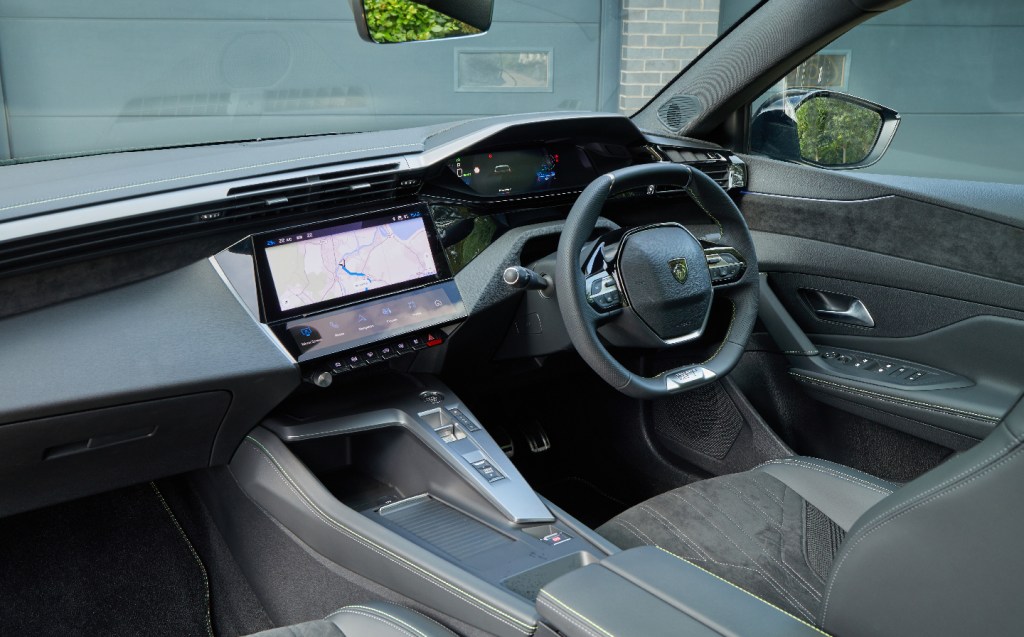
The main feature of i-Cockpit is a downsized steering wheel, which is squared off at the top and bottom so that you have a better chance of being able to read the instrument panel above it while also being able to fit your legs underneath. It’s a solution to a problem that didn’t exist, and ends up a compromise as a result.
Don’t get me wrong; it’s not terrible, and can suit some drivers and some categories of car (SUVs, for example) more than others. But in the 308 it’s not ideal, especially for my long frame which endured the added insult of having the shoulder blades pushed forwards by the top of the seat back, necessitating unwanted amounts of recline. This in turn requires the seat to be moved forward a little more than I’d have liked, reducing leg space.
Please Peugeot: give it up and return to tried-and-tested interior layouts. You had a go at doing something different, and we admire you for it, but there’s a reason no-one else has copied i-Cockpit.
But at least the cabin looks good, and the 308 models get clever digital i-Toggle buttons below the main 10in touchscreen that are customisable according to your tastes. I managed to set Times Radio as one of the buttons (the mention of which should help keep me in my job a little longer), which is handy for whenever you’ve been playing the Lego Movie soundtrack for the kids via Android Auto during the school run, and want to switch quickly to your favourite station.
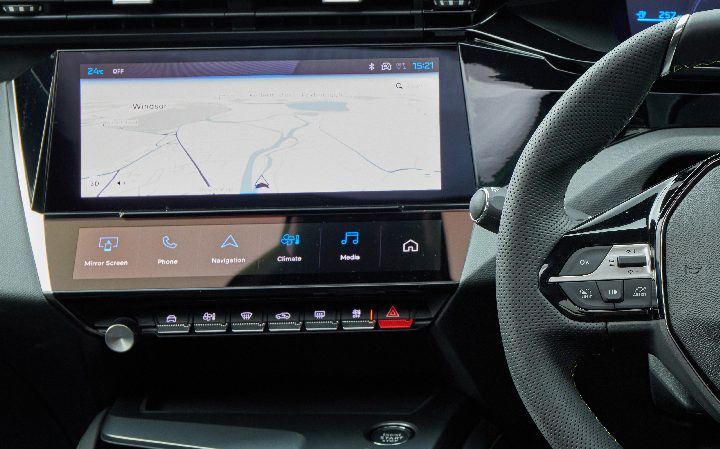
You can also use the i-Toggles to create a shortcut to the driver assistance features, allowing you to switch off the lane-keeping assist with a couple of taps (it’s fine on motorways but, as with all these systems, a pain on country lanes).
The e-308 is packed with tech, actually, including heated seats and heated steering wheel as standard, and a massaging function is available as an optional extra. The Matrix LED headlights, available from the mid-level GT trim upwards, are also terrific as they dip automatically around other vehicles, leaving the rest of the view ahead fully illuminated.
These are all things available for the Astra Electric too, though, so the Peugeot further differentiates itself in the ride quality and handling. I haven’t yet tried out the Vauxhall but one of my esteemed colleagues has written about the estate version on Driving.co.uk this week and described the driving experience as “acceptably swift”, “smooth” and “perfectly pleasant”, though “utterly unremarkable”.
For the Peugeot, there’s good news on this front. The e-308 offers a better balance than the petrol 308, which we’ve also had our hands on recently, and smooths out the road with more aplomb. The fossil burner is decently pleasing to drive but the electric model, with extra weight and tweaked suspension as a result, along with a lower centre of gravity, is actually a joy to hustle along B-roads as well as pootle around in around town.
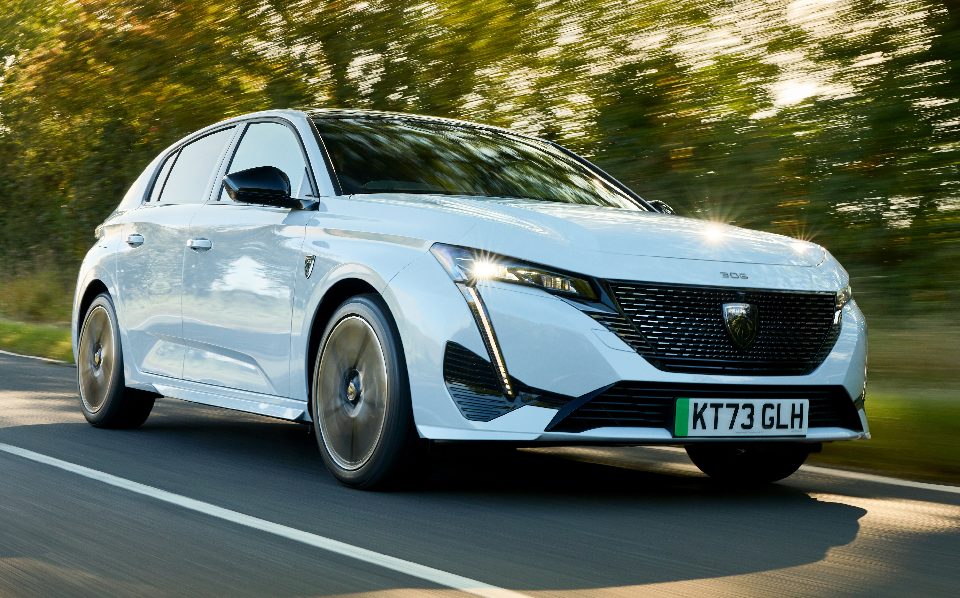
As mentioned, the 156bhp electric motor is shared with the Astra Electric, and while not face-stretchingly fast like a Tesla Model 3, its punchier than the MG 5 and also quicker than the petrol 308s at lower speeds, meaning enthusiastic acceleration and a more immediate response to inputs from your right foot.
I’d describe the performance as sprightly rather than quick, though actually more enjoyable in most situations than really high performance EVs. One friend of mine sent back his Kia EV6 because its rapid acceleration gave him a sore neck. I did mention that the accelerator pedal has many options between “foot off” and “flat to the floor”, but he didn’t really understand my point; what I should have done was recommend the Peugeot e-308.
The fact that you’ll need to plug in the Peugeot every 257 miles, according to the official data — though it’ll be more frequent at motorway speeds — means it has way less range than the Tesla Model 3 saloon or Model Y crossover. But it’s the same as the Astra Electric (obviously), on a par with the MG 5 Long Range estate, and just a little less than the entry-level Volkswagen ID.3 or Cupra Born hatchbacks.
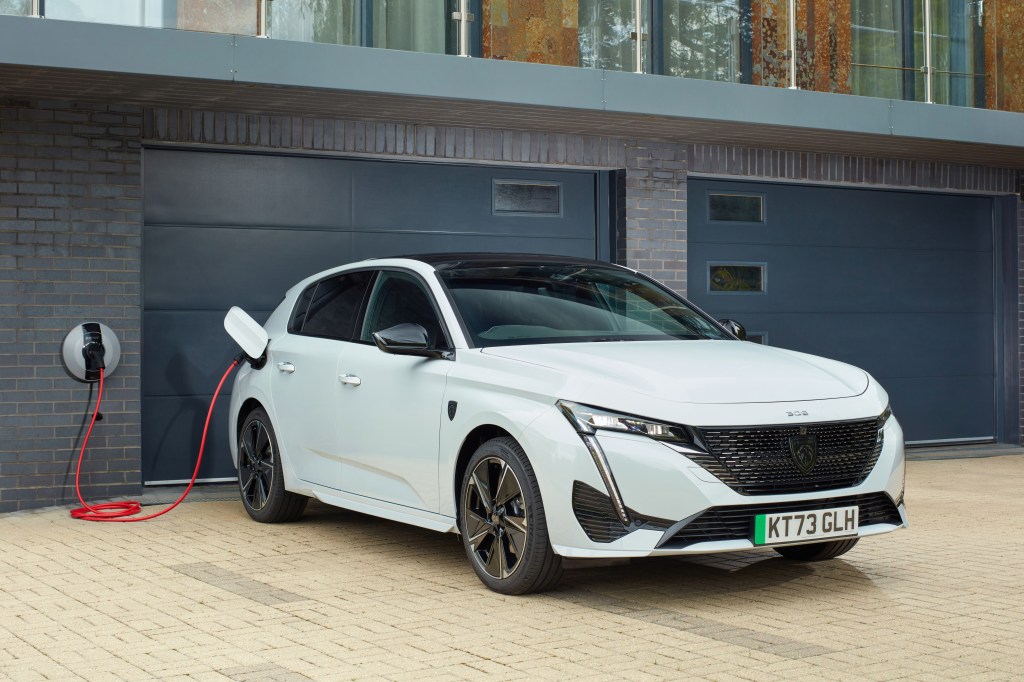
It is also mitigated by the fact that the 100kW DC charging speed allows top-ups from 20-80 per cent in less than 25 minutes, which is again nowhere near Tesla speeds but still enough time to go to the loo and buy a horrible sandwich at a motorway service station.
The real problem, though, is the question of value for money. The Peugeot e-308 simply doesn’t look as attractive as its rivals when you consider that prices start at £40,050, with another couple of grand on top for the GT and First Edition models. Prices for the SW estate versions haven’t been released yet but you can expect a premium of just over £2,000.
All of which has to be viewed in the context of electric rivals, including the one many will be looking to, the Tesla Model 3, which starts at under 40 grand these days, and comes with a range of more than 300 miles. Need more space? The Model Y starts at £44,990.
The MG 5 Long Range? You’re looking at £30,995, saving you a whopping 10 grand, but the quality difference is clear.
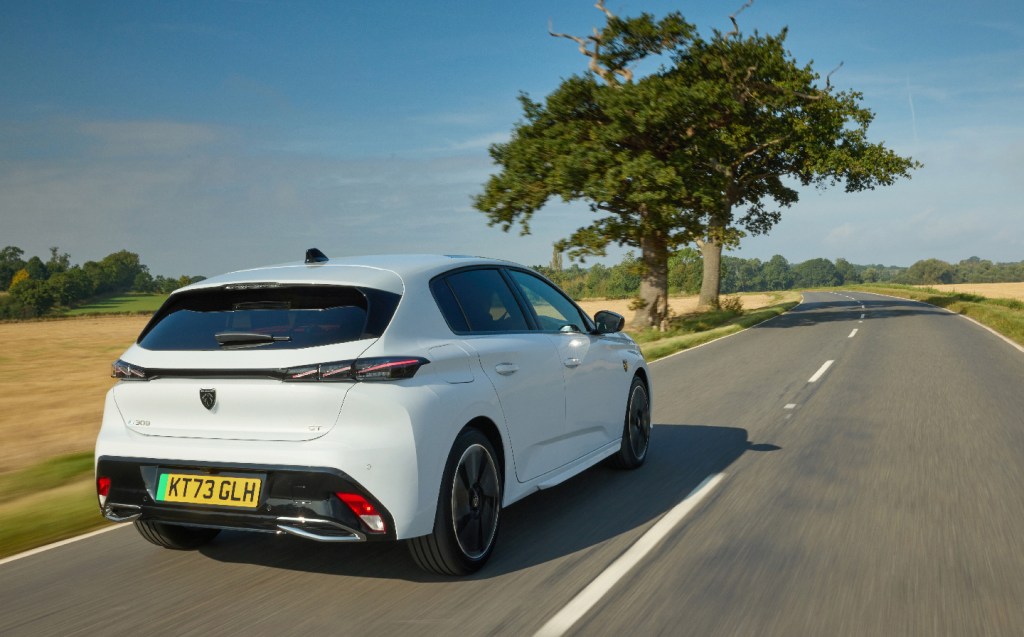
And those bargain prices are thanks to being Chinese-owned (MG) or having massive production facilities in China (Tesla), which might be something to consider.
For those who don’t want to line Elon Musk’s galaxy-sized pockets (and many don’t), for similar money to the e-308 you could look at the spacious Skoda Enyaq iV SUV, which has a similar range and starts at under £39,000, or that sexy Cupra Born hatch, which starts at £36,475 and is current available with 0% APR finance.
So just as with the Astra Electric, however much you like the look of the Peugeot e-308, however good it is to drive, and however much you might love the idea of an electric estate car (which are still very rare), it’s just too difficult to recommend wholeheartedly. Which means the Stellantis family needs to find a way to turn its giant size into smaller showroom prices.
Will has left Twitter/X… follow him on Bluesky instead
Related articles
- If you were interested in this review of the 2023 Peugeot e-308, you might like to read what we had to say about the Vauxhall Astra Sports Tourer Electric
- Peugeot 208 and e-208 review 2023: Bright future for updated supermini?
- MG4 2022 review: Bargain basement, or just a bargain?
Latest articles
- 29 of the best Christmas gifts for car lovers 2024
- Hyundai Ioniq 9 seven-seat electric SUV gets claimed 385 miles per charge
- Jaguar XJS reinvented as 660bhp ‘Supercat’ by resurrected racing specialists TWR
- Jaguar asks customers to ‘delete ordinary’ in make-or-break brand reinvention
- Extended test: Genesis Electrified GV70 2024 review
- First look at Jaguar’s electric future as four-door grand tourer begins on-road testing
- Abarth 600e 2025 review: Another welcome hot hatch for the electric generation
- Ford Explorer 2024 review: Electric crossover needs to be a monster hit, but is it a Frankenstein’s mismatch of parts?
- Leapmotor C10 2024 review: Chinese SUV needs to compete on more than just price


